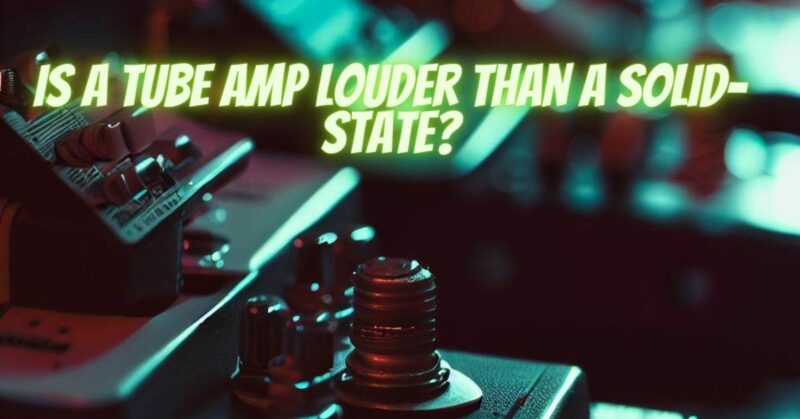The debate over the relative loudness of tube amplifiers and solid-state amplifiers has been a contentious one among audiophiles and music enthusiasts for decades. While some maintain that tube amps deliver a richer, more dynamic sound, others argue that solid-state amps offer superior clarity and power. At the heart of this debate lies the question of whether tube amps are inherently louder than solid-state amps.
Understanding Loudness Perception
Before delving into the technical aspects of tube and solid-state amplifiers, it’s crucial to establish a common understanding of loudness perception. Loudness is not solely determined by the wattage rating of an amplifier, but rather by the perceived intensity of sound reaching the listener’s ears. This perceived intensity is influenced by various factors, including the frequency spectrum of the sound, the efficiency of the amplifier, and the characteristics of the speakers.
Tube Amplification Technology
Tube amplifiers, also known as valve amplifiers, utilize vacuum tubes to amplify electrical signals. These tubes are filled with a gas, typically argon or xenon, and contain a cathode, an anode, and a grid. The flow of electrons between these electrodes creates an amplification effect.
Solid-State Amplification Technology
Solid-state amplifiers, on the other hand, employ transistors, which are semiconductor devices that control the flow of electrons without the need for vacuum tubes. Transistors are generally smaller, more reliable, and more energy-efficient than vacuum tubes.
Comparing Loudness
In terms of pure wattage output, solid-state amplifiers typically offer higher power ratings than tube amps of comparable size and weight. However, this doesn’t necessarily translate to a direct difference in perceived loudness.
The perceived loudness of a tube amp is often enhanced by its harmonic distortion characteristics. As a tube amp is driven harder, it introduces subtle harmonic distortions into the signal. These distortions can add perceived loudness and fullness to the sound, making it seem louder than it actually is.
Perceived Loudness vs. Actual Loudness
It’s important to distinguish between perceived loudness and actual loudness. Perceived loudness is the subjective experience of sound intensity, while actual loudness is a measurable physical quantity, often expressed in decibels (dB).
A tube amp may sound louder to a listener due to its harmonic distortions, but in terms of actual loudness, a solid-state amp of the same wattage rating may produce a higher decibel level.
Factors Influencing Loudness Perception
Beyond the type of amplifier, several other factors can influence loudness perception, including:
-
Room acoustics: The size, shape, and furnishings of a listening room can significantly impact the perceived loudness of sound.
-
Speaker efficiency: The efficiency of speakers, measured in decibels (dB) per watt (W), determines how much sound energy is converted from electrical input to acoustic output.
-
Listening distance: The distance between the listener and the speakers affects the perceived intensity of sound.
The question of whether tube amps are louder than solid-state amps is not a simple one to answer definitively. The perceived loudness of an amplifier depends on a combination of factors, including the amplifier’s technology, the characteristics of the speakers, the listening environment, and individual listener preferences.
Ultimately, the choice between a tube amp and a solid-state amp comes down to personal preference and the desired sound signature. Tube amps offer a warm, rich sound with subtle harmonic distortions, while solid-state amps provide a clean, precise sound with high power output.


